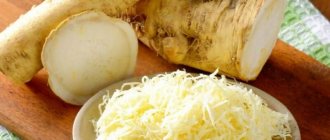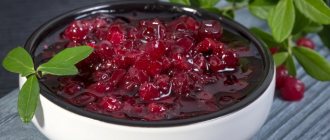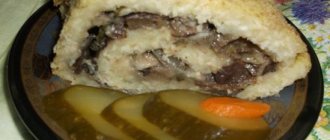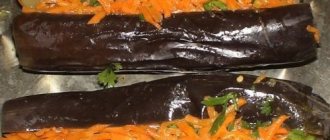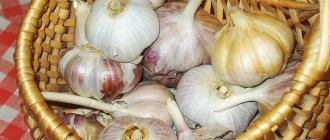It is not without reason that cilantro is used to season meat dishes in the Caucasus, a land of long-livers. Regular consumption of greens with a sharp, fresh aroma has a positive effect on blood pressure and blood flow. Substances contained in cilantro leaves stimulate the production of gastric juice, promote rapid digestion of fatty meat foods, and cleanse the body.
Both the leaves and seeds of coriander contain a lot of essential oils, vitamins, organic acids and other biologically active substances, thanks to which the seasoning has a pronounced beneficial effect on the general condition of the body and its defenses.
In the summer, when vitamins literally “grow in the garden,” it doesn’t cost anything to add a couple of sprigs of herbs to a salad or meat stew. But what to do in winter, when this type of greenery is not so accessible? How to preserve cilantro for the winter, and what can be prepared from this wonderful plant for future use?
How to preserve cilantro for the winter?
Like other varieties of aromatic greens, fresh cilantro can be stored in the refrigerator for no longer than 3-4 weeks. To do this, cut young stems and leaf petioles are immersed in a container of water, the top of the bunch is covered with a bag and in this form they are placed in the cold. For approximately the same time, cilantro leaves will remain juicy and green if they are placed in bags or containers.
To collect condensation that forms inside the container, you can lay a napkin, which will have to be changed from time to time.
But no matter how much you would like to prepare cilantro for the winter in its original form, it is unlikely that this will be possible. But there is no need to despair. The harvest grown in the beds will not be lost. If you use numerous recipes for preparing cilantro for the winter, which include drying, salting, freezing and other processing methods.
Storage methods
Spicy roots, which include coriander, are prepared for the winter in the same way as root vegetables, in order to use them fresh. You can also store greens by choosing one of the convenient methods.
- The most common is drying. Usually the spice is crushed and dried for several days in a ventilated area or an oven is used for this purpose.
- Cilantro pickled in water with vinegar and salt will last a long time. It is good to keep jars of herbs in the cellar, pantry or refrigerator.
- It’s also worth storing salted cilantro there. Fresh grass is compacted into glass jars, sprinkled with salt, and sent closer to the freezer.
- You can keep the herbs fresh if you freeze the spice. When you have a convenient camera, this storage method will be the best.
Modern drying
Coriander greens, even fresh in summer, quickly wither, so when preparing for the winter, many are interested in how to properly store cilantro so that it does not lose its spicy smell. This is especially true for the drying process.
- To wash off insects, dirt and sand from cilantro branches, rinse it in bunches first in a basin of water, then under a running stream.
- Place the washed spice in a colander and allow the water to drain.
- Then the greens are chopped, trying not to make them too small, because... it will eventually dry out.
- Cover trays, trays or flat dishes with newspapers and place a thin layer of cilantro on them.
- Dry in shaded but well-ventilated places. In a private house this can be attics or verandas, in an apartment - on the balcony or kitchen away from the sun. Sometimes an oven is used for drying, keeping it at a minimum temperature (about 40°C).
During drying, the greens should be stirred periodically so that the process proceeds more evenly. If you do not do this, mold may form in places and the entire workpiece will have to be thrown away. When the cilantro is completely dry, it is packaged in glass jars, covered with lids and stored in the pantry or on a kitchen cabinet shelf.
Ancient drying method
You can store dried spices the old fashioned way - with whole branches. They are collected in small bundles, tied, wrapped in canvas or paper and hung on the beam of an attic or barn. Here the cilantro can be stored for the whole winter. Residents of apartments can use loggias or closed balconies.
Pickling
Those who have been harvesting for a long time know how to preserve greens throughout the winter. One of the convenient methods is marinating, which can be described by the following algorithm:
- After boiling water, pour vinegar into it and add salt. For 300 g of liquid you should take 1 tbsp. vinegar (9%) and a pinch of salt.
- By this point, small jars of chopped cilantro should already be prepared. The spice is compacted down to the shoulders of the jar.
- The greens are poured with marinade so that they are completely covered with it.
- When the jars have cooled a little, pour another 1 tbsp on top. sunflower oil.
Top articles: How to properly store cabbage in the cellar and at home: ways to keep it fresh
After waiting for the marinade to cool completely, seal the jars with lids. The best storage place is considered to be the refrigerator, but you can also use a cool cellar.
Freezing
To keep cilantro fresh, it is recommended to freeze it. Whether it will last until next season will depend on how the housewife plans to store the cilantro for the winter. This method has its own technology, which is not difficult to master:
- The cilantro branches are sorted out, discarding spoiled ones, then washed under running water to wash away any remaining soil or sand.
- To dry, clean grass sprigs are placed in 1 layer on paper towels, which should be changed when wet.
- The prepared bunches are entirely packaged in plastic bags, wrapped in cling film or placed in special plastic trays. You can cut the greens and then pack them. Subsequently, the cilantro stored in the freezer is removed in portions as needed.
Spicy cubes
The original storage method is a frozen spice cube. It is very convenient to use when preparing soups and sauces.
- Leaves are cut from washed cilantro branches and placed in ice trays.
- The spice should be poured with boiled, cooled water.
You can store portioned cubes with cilantro in the freezer directly in the mold, or after hardening, transfer them to containers (or jars) and keep them in the refrigerator.
Preparing dried cilantro for the winter
One of the simplest and most common ways to preserve the beneficial properties and aroma of greens for a long time is drying. If all the rules are followed, the temperature and duration of the process are maintained, then crushed cilantro leaves retain their taste and aroma throughout the year and can be used to add to sauces and hot dishes.
Before preparing cilantro for the winter using this method:
- stems and leaves are washed;
- remove all rough and damaged parts of the plant;
- The greens are carefully dried so that no traces of water remain on the drying materials.
Gourmets claim that the pungent smell of cilantro becomes softer if the greens are chopped before consumption or processing.
Therefore, the young parts of the shoots and leaf plates are cut, and then laid out in a thin, even layer on clean baking sheets. Harvesting cilantro for the winter by drying is carried out in a dry, ventilated room. Plant materials should be located away from direct sunlight and heat sources with temperatures above 40°C. If the greens are dried in an oven or electric dryer, it is important to provide the cilantro with the same temperature regime and monitor the process all the time so that the raw materials do not stick together and the loss of moisture occurs evenly.
Dried cilantro is poured into clean glass or ceramic containers with tight-fitting lids. In a cool, dark place, spicy greens can be stored for about a year, completely retaining all the active substances, aroma and taste inherent in cilantro. Coriander seeds are dried in the same way, which in winter will be useful for making aromatic bread, adding to sauces, minced meat and poultry dishes.
Salting
If you decide to store cilantro in the refrigerator, you can pickle it for the winter. All you need for this is greens, glass jars, salt (20 grams of salt per 100 grams of cilantro).
Fresh coriander that has not yet bloomed is suitable. It must be sorted out so that there are no yellow and dry twigs, washed thoroughly, dried and cut. Then the chopped seasoning is placed in jars, compacted and sprinkled with salt. At the end, they are tamped so that the juice appears, covered with lids and placed in the coldest place in the refrigerator, further from the doors and closer to the freezer.
Cilantro goes best with meat dishes. It is also added to fresh salads, soups, khachapuri, lobio, used in pita bread, and eaten with cheeses. It gives dishes a very pleasant taste.
Dried cilantro
is the dried leaves of a spicy-aromatic plant of the umbrella family - coriander. It grows in the form of small bushes 25-65 centimeters high. Coriander leaves are attached along the stem and divided into wide lobes, reminiscent of parsley, so the second name of this bush is Chinese parsley. This is where the plant similarities end. In terms of taste, parsley is in many ways inferior to cilantro, as it does not have such a persistent aroma and taste.
The main regions where coriander grows in Russia are considered to be the southeastern and central parts. This plant is unpretentious, it is easy to grow in the garden or on the windowsill in the apartment.
It is recommended to start collecting leaves at a time when the plant has not yet begun to bloom and the growth has reached 20 centimeters. This mainly happens in early summer. It is best to cut the leaves with a sharp object at dawn; it is during this period that they are fully filled with all the vitamins and beneficial properties.
In Ancient Egypt, coriander was of great importance, as it was used in funeral rites, sacrifice rites, and many diseases were treated with its help. It was believed that its healing properties could make a person immortal. Cilantro was especially popular in the preparation of love potions, as it was credited with the ability to increase potency. It is also known that it was used to stimulate appetite and as an aphrodisiac.
The composition of cilantro is very rich in various vitamins, minerals and other components beneficial to the human body.
Due to its strong smell and bitter taste, this spice is very popular nowadays. Cilantro is most widespread in the Caucasus. It is used in the preparation of meat and vegetable dishes.
In the modern world, the use of fresh coriander leaves and fruits is very diverse, which cannot be said about dried cilantro.
Details of its use are described below.
Spicy oil based on coriander seeds and herbs
Based on dried cilantro and the seeds of this plant, you can prepare a spicy oil for dressing salads, making homemade mayonnaise and marinades. To do this, crushed parts of the plant or whole stems, as well as coriander umbrellas, are poured with any vegetable oil and left in a glass container for 8–10 days in a cool, dark place. Cilantro, rich in aromatic substances and essential oils, already transfers some of them to liquids during this period.
If the plant material is left for a longer period, the oil acquires a rich red-brown hue and a sweetish-spicy aroma.
And from fresh herbs, cilantro, basil and other spices based on olive oil, you can prepare and preserve for the winter a spicy dressing for cereal dishes and potatoes.
To prepare it you will need:
- 1 cup fresh green basil leaves;
- 1 cup chopped young stems and leaves of cilantro;
- 1 clove of garlic, peeled and chopped;
- 1/2 pod of seeded jalapeno pepper;
- 1/2 cup olive oil.
The vegetables for this preparation of cilantro for the winter are first cleaned, washed and crushed in a blender, after which olive oil is gradually added to the bowl and the mass is carefully mixed again until it becomes a homogeneous puree. The dressing, poured into glass containers, will be ready after a month of storage in a cool, dark place.
If desired, you can add a little lemon juice and salt to the aromatic oil. In this case, the sauce can be served with meat, mushrooms and baked vegetables.
Is it possible to freeze cilantro for the winter? Yes, and in this case, vegetable oil or butter will come in handy, and the greens that have retained all their beneficial qualities will turn into an excellent seasoning for vegetable and meat dishes, sandwiches, rice and pasta.
↑ What is “cilantro”?
Coriander or silantro, or cilantro are all names for the same very healthy green spice, which is very popular among the peoples of the Caucasus.
Not a single meat dish among self-respecting mountaineers can do without it. The seasoning is also widely used to add a special aroma to various dishes; it is used for making pickles, marinades and even for baking. It is worth clarifying that “cilantro” refers to the greens themselves, and “coriander” refers specifically to the plant and seeds, which have a round shape. This fragrant herb is very loved by cooks and housewives not only in the East. Europeans and Americans quite often add it to various recipes to add a special piquancy to their dishes and as an additional source of benefits for maintaining health and beauty. Which is not surprising, since regular consumption of cilantro has a beneficial effect on the circulatory system and blood vessels in general. Cholesterol decreases and blood sugar levels decrease. ✦ You need to know this about cilantro: Harm and benefits of cilantro for human health - be sure to read before consuming it
If you want to cleanse your body, improve digestion (this is especially true for those who eat meat), improve the functioning of the liver and kidneys, and also supplement your diet with vitamins, phosphorus, potassium, various minerals and saturated fatty acids, then you need to regularly use this amazing and extremely healthy spice.
In areas with a warm and favorable climate, there is no need to harvest this miracle grass. The situation is different in regions with cold and snowy winters. After all, only in the summer, when we grow healthy greens in our beds, can we boast of an abundance of vitamins and minerals. But don’t despair, you can prepare cilantro and delight yourself with the taste and benefits of this green all year round.
Freezing greens: recipes for preparing cilantro for the winter
Low temperatures make it possible not only to preserve cilantro for the winter, but also to preserve all the vitamins and active substances in its composition. The simplest way to freeze cilantro is:
- in preliminary sorting and washing of greens;
- dry it thoroughly on a paper or cloth towel;
- in crushing and distribution into dense bags.
After this, the closed containers with the herbs are put into the freezer, where the herbs are to be stored. If, according to this recipe, not only cilantro, but also other herbs are prepared for the winter, it is better to sign the bags in advance to make it easier to recognize green raw materials in the future.
Portion cubes based on chopped cilantro are becoming more and more popular among housewives. Making them at home is not at all difficult. The foliage and juicy parts of the petioles are crushed, and the resulting mass is placed in ice molds or other small containers. Water added to the chopped greens holds them together, giving the cilantro prepared for the winter the shape of a cube.
Instead of water, you can add melted butter or olive oil, as well as garlic and lemon juice, with which cilantro goes well.
What is the best way to process and properly store it at home?
In order for frozen sorrel prepared for the winter to be stored for a sufficiently long time, you must first sort it out and select whole leaves. It is advisable to use recently harvested greens so that they retain as many vitamins as possible. It is better to get rid of yellowed and damaged parts, because they can adversely affect the harvesting process.
Cultivated sorrel is more suitable than any other for freezing, due to its large size and softness. But other types are also acceptable for this.
Top articles: After how many days can you eat pickled milk mushrooms?
Greens should be collected before arrows appear on the leaves.
Before freezing sorrel, you need to rinse it well with clean water, or soak it in some deep plate in cold water. After some time, all the dirt will appear on the surface of the water. After washing, the vegetable must be dried. If this is not done, the excess liquid will freeze along with it. The leaves can be spread on a towel until the moisture disappears.
Once they are dry enough, you can start chopping them. Some people are not entirely clear whether to freeze the stems along with the leaves? If they are not very rough, then you can add them. It is not recommended to use coarse ones because they will impart a bitter taste.
After the preparation is completed, you need to choose a method for freezing the plant.
Conventional freezing of fresh plants in bags
This method is easy to perform and does not require special skills. No additional costs are needed.
The disadvantage is that you cannot refreeze previously thawed greens, because the beneficial properties will be lost. Therefore, you should always keep the temperature low.
Ingredients:
- a large pile of young sorrel;
- packaging bags for products.
Cooking method:
- Finely chopped sorrel is packaged in bags so that each contains a portion for 1-2 dishes.
- Wrap the bags tightly and release all the air from them.
- Leave in the freezer until winter.
In the cold season, you can add sorrel to soups and pies.
We invite you to watch a video with step-by-step instructions for freezing sorrel in bags:
Storage in briquettes
This is a good alternative to traditional freezing. Briquettes take up little space in the freezer and look beautiful.
Ingredients:
- sorrel in a ratio of 2/3;
- nettle in a ratio of 1/3;
- silicone molds.
Only sorrel can be used.
Cooking method:
- Rinse the nettles with cool water.
- Place chopped sorrel and nettles in deep plates.
- Pour boiling water over both dishes for about 20 minutes.
- Squeeze them thoroughly so that there is no excess water.
- Grind the nettles and mix together with the sorrel in one bowl.
- Pour the resulting mixture into molds and compact.
- Place in the freezer for 12 hours.
- Remove the frozen briquettes from the molds, place them in packaging bags, and close them well.
From the resulting briquettes you can prepare soups and green borscht in winter.
Blanching method
This method allows you to bypass the bad consequences, as well as preserve the color and beneficial properties of greenery as much as possible. This is explained by the fact that during such processing the functions of enzymes slow down, and under the influence of high temperature they are completely destroyed.
Cooking method No. 1:
- Place finely chopped sorrel in a colander.
- Place it in a pan of boiling water for 60 seconds.
- Remove from the water and wait until all the liquid has drained.
- Place blanched sorrel in ramekins.
- Place in the freezer for several hours.
- Remove and place in containers or bags.
Cooking method No. 2:
- Place the chopped sorrel in a saucepan and place on low heat.
- 5 minutes after boiling, remove the greens.
- Let it cool and pour into molds.
- Place in the freezer for several hours.
- Place frozen sorrel in bags and seal well.
In winter, you can add it to any dish.
Preparation in ice cubes
Is it possible to freeze sorrel in ice cubes and how to do it? It can be done very simply and quickly. This method is convenient in cases where you need to add a small amount of greens to a dish.
All you need is sorrel and ice cube trays. They can be either plastic or silicone.
Cooking method:
- Place finely chopped sorrel in each cell.
- Fill with water (about 1 tablespoon of water per cell).
- Place in the freezer for several hours.
- Place the frozen cubes into a bag.
These cubes may be needed to make sorrel sauce or delicious pies.
You can freeze greens using any of the following methods. It can be stored until next season. When used in cooking, no pre-thawing is required. You just need to add frozen sorrel to the dish.
Snack butter with cilantro and vegetables for the winter
Butter, like vegetable oil, helps greens and all their beneficial properties survive almost until next spring.
To use this recipe and preserve cilantro for the winter, chop the greens, mix thoroughly with softened butter and, placing them on cling film or a sheet of parchment, form a block that is convenient for storage and subsequent cutting. In the freezer, butter with cilantro can be stored for 3 to 6 months; the product can be used when preparing rice and potato dishes, minced meat and pasta.
If desired, in addition to cilantro, add green and mild onions, garlic and lemon zest, pieces of sweet pepper and other spicy crops to the oil.
A little table salt will help the savory oil last longer, and the vegetables and herbs in it will remain juicy, just like when picked from the garden.
How to preserve cilantro for the winter: marinade recipe
Adding vinegar helps food preserve for a long time, and cilantro is no exception. The simplest recipe for preparing cilantro for the winter involves pouring chopped greens with a marinade of 300 ml of water, a pinch of salt and a tablespoon of 9 percent vinegar.
Tightly packed glass jars with spicy leaves:
- pour in the prepared marinade:
- let it brew;
- then add a little vegetable oil on top;
- cover the containers with lids.
Cilantro prepared according to this recipe for the winter will improve the taste of salads, meat sauces and vegetable stews. The marinated greens should be stored in the refrigerator or cellar.
Cilantro chutney with garlic and nuts
Fans of oriental cuisine can use a recipe for preparing cilantro for the winter, where the seeds of this plant are used along with herbs. Walnut kernels and garlic are crushed, chopped onions, cilantro and parsley are added to the same container. A small pod of seeded hot pepper will add spiciness to the seasoning.
Dried ground coriander grains, turmeric, fenugreek, paprika and salt are added to the chopped vegetables and herbs to taste. As a marinade, use water mixed with white wine vinegar. For 50 ml of boiled water you will need 3 tablespoons of vinegar. Add enough liquid to the mixture to form a thick paste, while gently stirring the sauce without stopping.
The finished seasoning, prepared from cilantro for the winter, is placed in jars and stored in the cold. You can serve chutney with fried slices of zucchini or eggplant, or add the sauce to rice or couscous.
Cilantro chimichurri sauce
To prepare the famous Latin American chimichurri sauce, which is used to season juicy beef steaks, corn and unleavened tortillas stuffed with mushrooms and vegetables, you will need:
- 1 large bunch of cilantro, trimmed of rough petioles and stems;
- 8 cloves of garlic;
- 3 tablespoons red wine vinegar;
- juice of one lime;
- 70 grams of toasted pumpkin seeds;
- 1/2 cup olive oil;
- a little red pepper, ground or finely chopped;
- salt to taste.
All ingredients, except olive oil, are ground and mixed in a blender until pureed, then the oil is carefully poured in, and the sauce is mixed again, achieving a smooth, homogeneous mass. Add salt, lemon or lime juice and wine vinegar to your taste. The main note of the seasoning’s taste is set by cilantro and garlic. This cilantro preparation for the winter is packaged in small glass jars and stored in a refrigerator.

